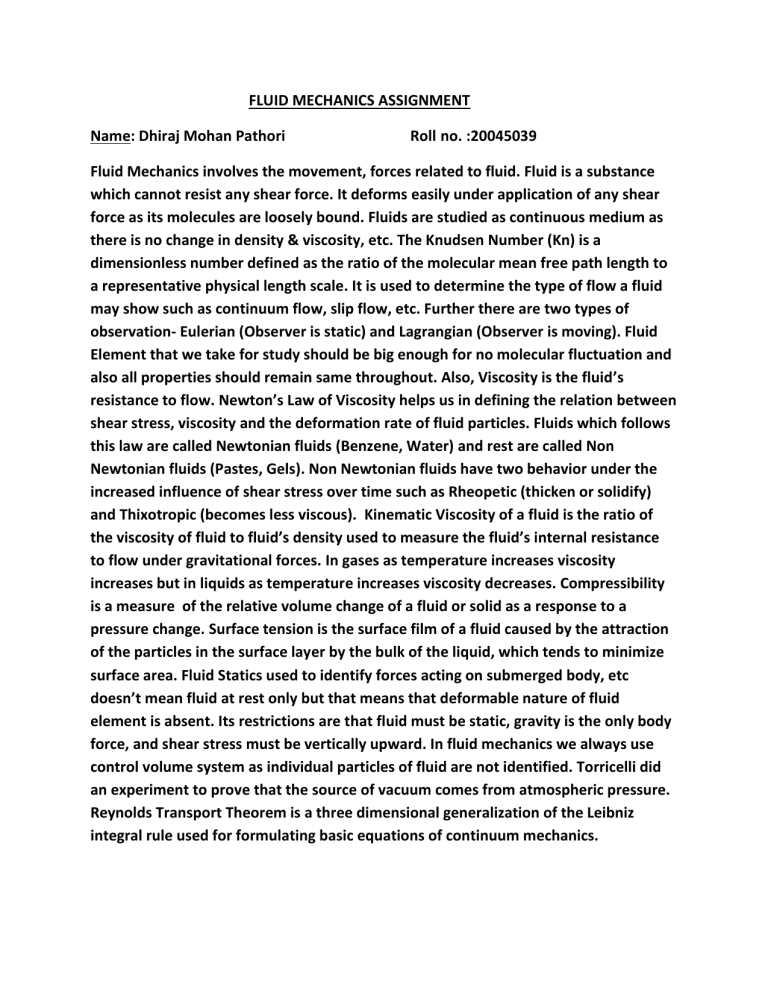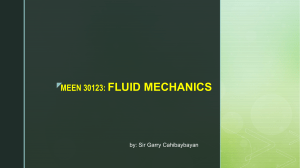
FLUID MECHANICS ASSIGNMENT Name: Dhiraj Mohan Pathori Roll no. :20045039 Fluid Mechanics involves the movement, forces related to fluid. Fluid is a substance which cannot resist any shear force. It deforms easily under application of any shear force as its molecules are loosely bound. Fluids are studied as continuous medium as there is no change in density & viscosity, etc. The Knudsen Number (Kn) is a dimensionless number defined as the ratio of the molecular mean free path length to a representative physical length scale. It is used to determine the type of flow a fluid may show such as continuum flow, slip flow, etc. Further there are two types of observation- Eulerian (Observer is static) and Lagrangian (Observer is moving). Fluid Element that we take for study should be big enough for no molecular fluctuation and also all properties should remain same throughout. Also, Viscosity is the fluid’s resistance to flow. Newton’s Law of Viscosity helps us in defining the relation between shear stress, viscosity and the deformation rate of fluid particles. Fluids which follows this law are called Newtonian fluids (Benzene, Water) and rest are called Non Newtonian fluids (Pastes, Gels). Non Newtonian fluids have two behavior under the increased influence of shear stress over time such as Rheopetic (thicken or solidify) and Thixotropic (becomes less viscous). Kinematic Viscosity of a fluid is the ratio of the viscosity of fluid to fluid’s density used to measure the fluid’s internal resistance to flow under gravitational forces. In gases as temperature increases viscosity increases but in liquids as temperature increases viscosity decreases. Compressibility is a measure of the relative volume change of a fluid or solid as a response to a pressure change. Surface tension is the surface film of a fluid caused by the attraction of the particles in the surface layer by the bulk of the liquid, which tends to minimize surface area. Fluid Statics used to identify forces acting on submerged body, etc doesn’t mean fluid at rest only but that means that deformable nature of fluid element is absent. Its restrictions are that fluid must be static, gravity is the only body force, and shear stress must be vertically upward. In fluid mechanics we always use control volume system as individual particles of fluid are not identified. Torricelli did an experiment to prove that the source of vacuum comes from atmospheric pressure. Reynolds Transport Theorem is a three dimensional generalization of the Leibniz integral rule used for formulating basic equations of continuum mechanics.




